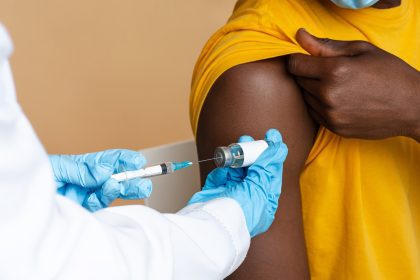The world of emergency contraception extends far beyond the familiar Plan B option that many people immediately think of when considering pregnancy prevention after unprotected sex. While Plan B remains the most recognized name in emergency contraception, several alternatives offer unique advantages that might better suit individual needs depending on various factors including timing, body weight, and accessibility.
Understanding emergency contraception fundamentals
Emergency contraception refers to methods used to prevent pregnancy after unprotected intercourse, contraceptive failure, or sexual assault. These methods work primarily by delaying or preventing ovulation, making it less likely for sperm to encounter an egg for fertilization. Unlike abortion pills, emergency contraceptives do not terminate existing pregnancies but rather prevent conception from occurring in the first place.
The effectiveness of these methods typically depends on how quickly they’re used after unprotected sex. Most work best when taken within the first 24 hours but can remain effective for several days depending on the specific method. This timing factor makes awareness of all available options crucial for making informed decisions during time-sensitive situations.
While Plan B (levonorgestrel) dominates pharmacy shelves as the most visible emergency contraceptive, knowing about alternatives allows individuals to choose options that might provide better effectiveness based on their specific circumstances, timing needs, or body composition.
Ella: The prescription alternative with extended effectiveness
Ella (ulipristal acetate) represents one of the most effective emergency contraceptive pills available, though it requires a prescription from a healthcare provider. This medication works differently than levonorgestrel-based options by blocking progesterone receptors, which prevents or delays ovulation even if the luteinizing hormone surge has already begun.
- Timing advantage – While Plan B’s effectiveness declines significantly after 72 hours, Ella maintains consistent effectiveness for the full five days (120 hours) after unprotected sex. This extended window makes it particularly valuable for individuals who can’t access emergency contraception immediately.
Research shows that Ella reduces pregnancy risk by approximately 85% when taken within five days, without the significant drop-off in effectiveness seen with levonorgestrel methods as time passes. This consistency throughout the five-day window distinguishes it from other options.
The prescription requirement represents both a limitation and advantage. While it creates an access barrier requiring a healthcare visit or telehealth appointment, this interaction allows for professional guidance and consideration of individual health factors. Many online healthcare services now offer quick prescriptions for Ella, making it more accessible than in previous years.
Ella comes with an average cost of approximately $50-$70 without insurance coverage, placing it at a slightly higher price point than over-the-counter options. However, many insurance plans cover it as a prescription medication, potentially reducing out-of-pocket expenses.
Weight considerations play an important role when choosing emergency contraception. Research indicates that Ella maintains better effectiveness than levonorgestrel pills for individuals with higher body mass indexes (BMI), though effectiveness may still decrease somewhat in individuals with BMIs over 35.
Copper IUD: The dual-purpose emergency contraception
The copper intrauterine device (IUD) stands apart from other emergency contraception methods by offering both immediate emergency protection and long-term birth control benefits. This small T-shaped device works by creating an environment inhospitable to sperm while also preventing implantation.
- Effectiveness leader – The copper IUD boasts an impressive 99.9% effectiveness rate when inserted within five days of unprotected sex, making it the most effective emergency contraception option available. Unlike hormonal methods, its effectiveness doesn’t decline with time during the five-day window or with increased body weight.
The device provides immediate protection once inserted and continues working as highly effective contraception for up to 10-12 years afterward. This dual functionality makes it particularly valuable for individuals seeking both emergency protection and long-term contraception.
However, the copper IUD comes with significant access considerations. It requires insertion by a healthcare professional, usually an obstetrician-gynecologist or trained nurse practitioner, making it less immediately accessible than pill options. Appointments may be difficult to schedule within the critical five-day window, particularly in areas with limited healthcare resources.
Cost represents another consideration, with prices ranging from $500 to $1,300 without insurance coverage. However, many insurance plans, including Medicaid in most states, cover IUD insertion, potentially eliminating out-of-pocket expenses. Some public health clinics also offer sliding scale payment options.
The copper IUD provides non-hormonal emergency contraception, making it suitable for individuals who cannot or prefer not to use hormonal methods due to medical conditions or personal preference. It begins working immediately without waiting for hormones to take effect in the body.
Alternative levonorgestrel options: Beyond Plan B
While Plan B remains the most recognized brand, numerous other levonorgestrel-based emergency contraceptives offer essentially identical effectiveness at varying price points. These medications all contain 1.5mg of levonorgestrel and work primarily by preventing or delaying ovulation.
- Accessible alternatives — Brands like Take Action, My Way, Option 2, Preventeza, AfterPill, and My Choice all contain the same active ingredient and dosage as Plan B but typically cost $10-15 less. These FDA-approved alternatives work exactly the same way as their more famous counterpart.
These options are available without prescription regardless of age and can be found at most pharmacies, grocery stores with pharmacy sections, and online retailers. Their over-the-counter availability makes them more immediately accessible than prescription options like Ella.
Timing remains crucial for levonorgestrel effectiveness. These medications work best when taken within 24 hours of unprotected sex, with effectiveness declining to approximately 89% when taken within 72 hours. After three days, their effectiveness drops considerably, making them less reliable options for individuals unable to access emergency contraception quickly.
Weight considerations present important limitations for levonorgestrel options. Research indicates reduced effectiveness in individuals with BMIs over 25, with significant reduction in those with BMIs over 30. This limitation makes alternative options like Ella or the copper IUD more reliable choices for individuals with higher body weights.
The typical cost ranges from $35 to $50 for brand-name versions, with generic alternatives available for $25 to $45. Some online retailers offer even lower prices for generic versions, making them the most affordable emergency contraception option for those paying out-of-pocket.
Yuzpe method: The combination birth control pill approach
The Yuzpe method represents an emergency contraception approach utilizing regular birth control pills in specific combinations. Though less commonly discussed than dedicated emergency contraceptives, this method provides an option for individuals who already have birth control pills but cannot access dedicated emergency contraception.
- The medication adaptation – This method involves taking specific doses of combined estrogen-progestin birth control pills within 120 hours of unprotected sex. The exact number of pills depends on the specific birth control brand and hormone content, requiring careful attention to dosing.
The effectiveness rate of approximately 75% when used correctly places it below dedicated emergency contraceptives. Additionally, the method typically requires two doses taken 12 hours apart, creating compliance challenges compared to single-dose options.
Side effects tend to be more pronounced with this method compared to dedicated emergency contraceptives, including nausea, vomiting, dizziness, and fatigue. Healthcare providers may recommend taking anti-nausea medication before each dose to minimize these effects.
Not all birth control pills work for this method, making professional guidance particularly important. Only specific combined hormonal pills containing both estrogen and progestin in particular dosages can be used effectively. Progestin-only pills (mini-pills) cannot be used for emergency contraception.
While the method doesn’t require purchasing dedicated emergency contraception if appropriate birth control pills are already available, it should generally be considered a last-resort option when dedicated emergency contraceptives cannot be accessed. Its primary benefit lies in providing an option when other methods are unavailable, though medical guidance is strongly recommended.
Regular hormonal birth control: The advance preparation option
Using regular hormonal contraception methods represents an often-overlooked approach to emergency situations that prevents the need for dedicated emergency contraception entirely. While not technically emergency contraception, starting or consistently using regular birth control provides significant protection.
- The prevention alternative – Regular hormonal contraception methods like the pill, patch, ring, or injections provide consistent protection against unplanned pregnancy when used correctly and consistently. This approach eliminates the time pressure and reduced effectiveness associated with post-intercourse methods.
Regular contraception must be started before sexual activity to provide reliable protection. However, some methods like the birth control pill can be “quick started” at any point in the menstrual cycle with backup methods used for the first seven days.
Cost varies significantly depending on the specific method and insurance coverage, ranging from fully covered under many insurance plans to approximately $50 monthly for pills without insurance. Many public health clinics offer low-cost or free contraception options based on income.
Accessibility has improved dramatically with telehealth services now offering contraception prescriptions through virtual visits, often with same-day prescription availability. Several apps and websites specialize in contraception access, making it easier than ever to obtain regular birth control.
The advantage of this approach lies in its preventative nature, eliminating the stress, urgency, and potentially reduced effectiveness of seeking emergency contraception after unprotected sex. Regular methods also typically cause fewer side effects than the higher hormone doses in emergency contraceptives.
Key factors affecting emergency contraception choices
Several personal and situational factors influence which emergency contraception option might work best for specific individuals. Understanding these considerations helps inform more personalized choices.
Timing since unprotected sex significantly impacts method effectiveness. For intercourse that occurred within 24 hours, all methods remain highly effective. Between 24-72 hours, Ella maintains better effectiveness than levonorgestrel options. Between 72-120 hours, only Ella and the copper IUD maintain reliable effectiveness.
Body weight considerations affect hormonal emergency contraception methods. Research indicates that levonorgestrel options (Plan B and alternatives) show decreased effectiveness in people with BMIs over 25 and significant reduction in those with BMIs over 30. Ella maintains better effectiveness at higher weights but may still show some reduction in individuals with BMIs over 35. The copper IUD’s effectiveness remains consistent regardless of weight.
Medical history plays an important role in method selection. Certain conditions like unexplained vaginal bleeding or certain cancers may contraindicate specific emergency contraception options. Similarly, medications like certain anticonvulsants or St. John’s Wort may reduce the effectiveness of hormonal emergency contraceptives.
Healthcare access varies dramatically between regions and individuals. Those with limited access to healthcare providers or pharmacies face greater challenges accessing prescription methods or the copper IUD. Online resources including telehealth services have expanded access in recent years, but barriers remain for many underserved populations.
Insurance coverage significantly impacts affordability. While over-the-counter options typically aren’t covered by insurance, prescription methods like Ella and the copper IUD often receive coverage. State Medicaid programs and the Affordable Care Act have expanded contraception coverage, though gaps remain depending on insurance type and location.
Addressing common misconceptions about emergency contraception
Misinformation about emergency contraception remains widespread, creating unnecessary barriers and concerns. Addressing these misconceptions proves essential for informed decision-making.
Emergency contraception differs fundamentally from abortion. These methods prevent pregnancy by delaying ovulation or preventing fertilization rather than terminating an existing pregnancy. They will not affect an already established pregnancy and work primarily by preventing the egg and sperm from meeting.
Multiple uses remain safe when necessary. While emergency contraception shouldn’t replace regular birth control methods due to higher cost and lower effectiveness, no medical evidence suggests that occasional repeated use causes health problems. However, experiencing multiple contraceptive emergencies might indicate that a regular birth control method would be more appropriate.
The morning-after pill terminology creates misconceptions about timing. While effectiveness is highest immediately after unprotected sex, most emergency contraception methods work for multiple days afterward, not just “the morning after.” This misunderstanding can prevent people from seeking emergency contraception if more than one day has passed.
Advance purchase of emergency contraception provides valuable preparation for unexpected situations. Unlike some medications, levonorgestrel emergency contraceptives don’t require refrigeration and maintain effectiveness for several years before expiration. Having emergency contraception already available eliminates delays in access during time-sensitive situations.
Age restrictions no longer apply to emergency contraception in the United States. Following legal challenges, levonorgestrel emergency contraceptives are now available without prescription regardless of age. No identification is required for purchase, though they may be kept behind pharmacy counters or in locked cases in some stores due to their higher cost.
Accessing emergency contraception
The landscape of emergency contraception access continues to evolve, with multiple pathways now available depending on the specific method needed.
Retail availability has expanded significantly, with levonorgestrel options now stocked in most major pharmacy chains, grocery stores with pharmacy sections, and many general retailers. These methods are typically available without prescription, ID requirements, or age restrictions, though they may be kept behind counters or in locked displays.
Online retailers now offer both levonorgestrel emergency contraceptives and telehealth services for prescription options like Ella. Several companies specialize in reproductive healthcare access, providing virtual appointments and direct shipping of contraceptives, often within 1-2 days.
Community health resources like Planned Parenthood, public health departments, and community health centers typically offer emergency contraception services, often on a sliding scale basis for those without insurance coverage. Many provide same-day appointments for emergency contraception needs.
College health centers frequently stock emergency contraception and may provide it at reduced cost to students. Some institutions have installed vending machines containing emergency contraception to improve after-hours access in campus settings.
Workplace benefits increasingly include contraception coverage and telehealth services that can facilitate emergency contraception access. The Affordable Care Act requires most employer-based insurance plans to cover contraception, though some exemptions exist.
Future directions in emergency contraception
Research continues to advance emergency contraception options, with several promising developments on the horizon that may expand choices in coming years.
New formulations designed to maintain effectiveness regardless of body weight represent a significant area of research. Current methods show reduced effectiveness in individuals with higher BMIs, creating an important gap in emergency contraception access.
Over-the-counter access for ulipristal acetate (Ella) could potentially eliminate the prescription barrier while maintaining its extended effectiveness window and better performance at higher body weights. Advocacy efforts continue to push for this regulatory change.
Male contraceptive methods remain under development, with several promising approaches in clinical trials. These methods could eventually shift contraceptive responsibility more equally between partners.
Digital tools for fertility awareness and contraception management continue to evolve, potentially helping users identify risk periods more effectively and access emergency contraception more promptly when needed.
Public health initiatives focused on emergency contraception awareness and access continue to expand in many regions, working to ensure that all individuals have both the information and resources needed to access these important options.
Making informed choices
Emergency contraception represents an important component of comprehensive reproductive healthcare, offering multiple options to prevent unintended pregnancy after unprotected sex. By understanding the full spectrum of available methods beyond just Plan B, individuals can make more informed choices based on their specific situations, medical needs, and access considerations.
The most effective approach involves considering personal factors like timing since unprotected sex, body weight, medical history, and access capabilities when selecting emergency contraception. While over-the-counter options provide immediate accessibility, prescription methods or the copper IUD may offer superior effectiveness depending on individual circumstances.
For those at risk of unplanned pregnancy, having a plan for emergency contraception before it’s needed can eliminate critical delays. This might involve keeping levonorgestrel pills on hand, knowing which healthcare providers can prescribe Ella quickly, or establishing ongoing regular contraception.
The evolution of emergency contraception options reflects broader advancements in reproductive healthcare, providing more effective and accessible choices than ever before. By staying informed about these options, individuals can better navigate unexpected situations with greater confidence in their reproductive healthcare decisions.
















